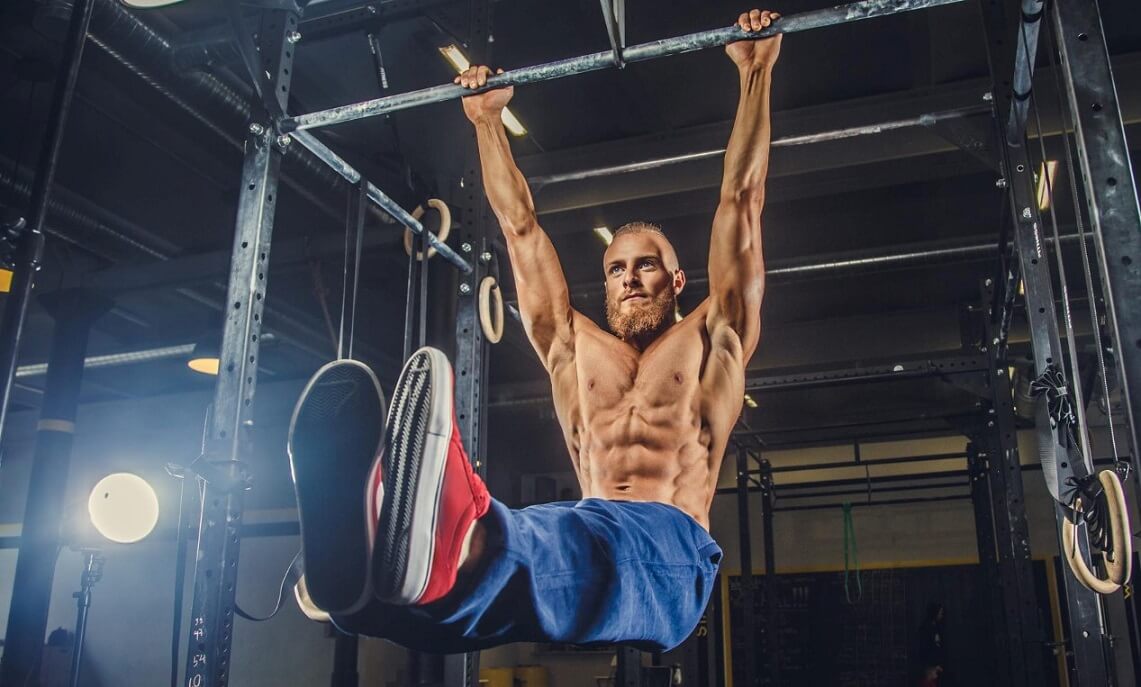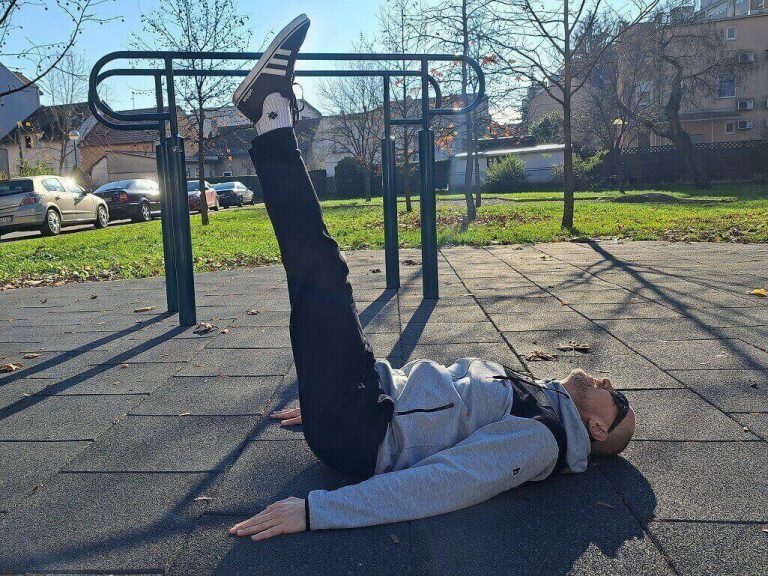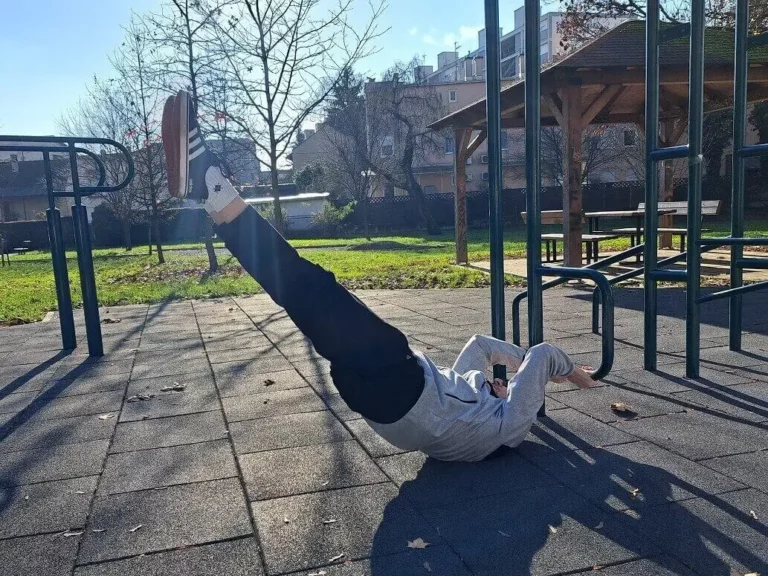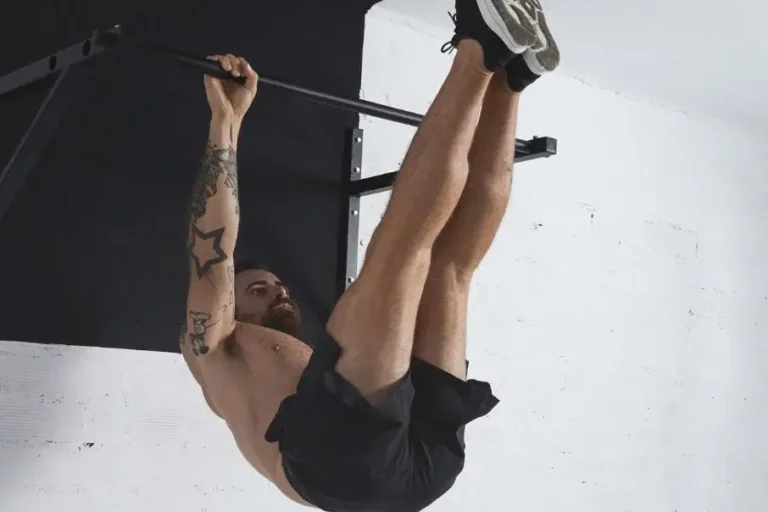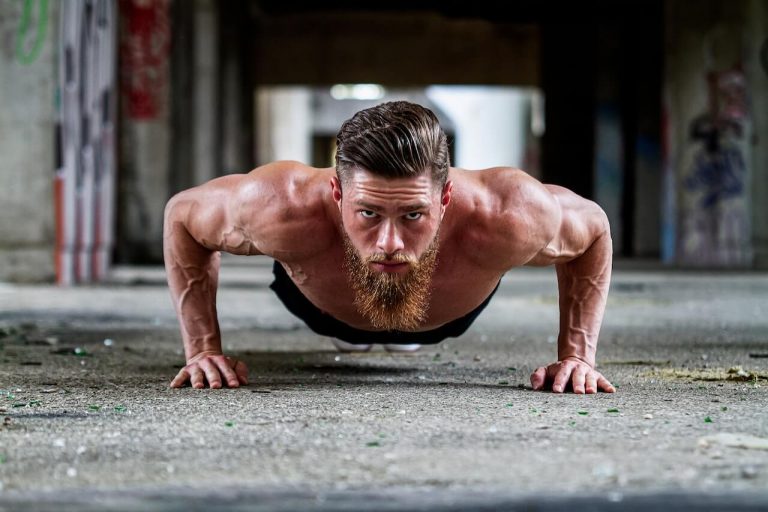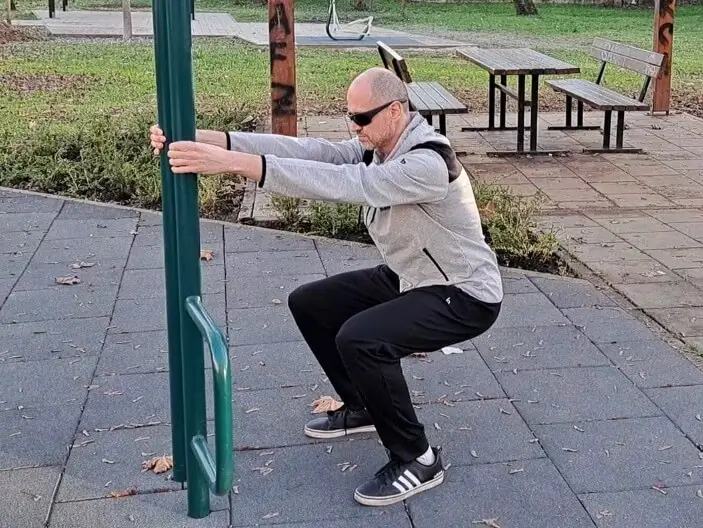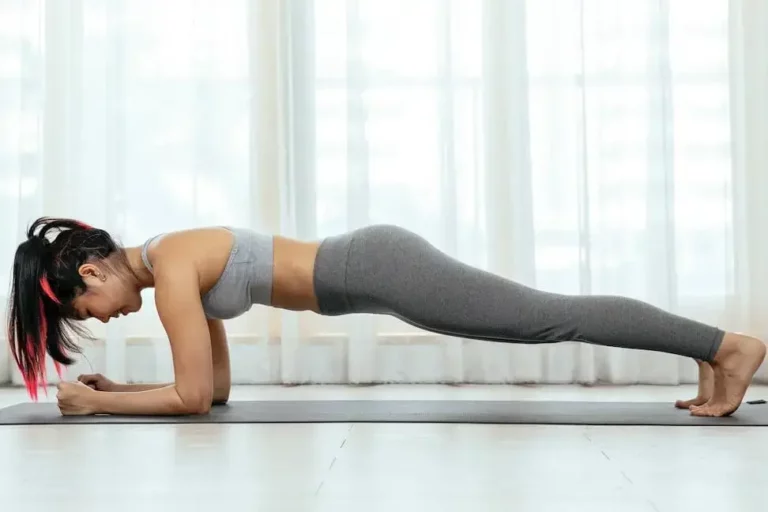Hanging Leg Raises For Improved Strength And Flexibility
Hanging leg raises are great for building the strength of your hip flexors and abs. This skill is not suitable for beginners.
It will require a reasonable amount of hip flexor strength, hamstring flexibility, and grip strength. If you are just starting out, you may lack some of these requirements.
I was lacking all of those when I started training. Hanging leg raises were out of my reach for more than two years.
I didn’t know about this exercise when I started. Once I became aware of it, I found I couldn’t do it.
I couldn’t hang from a bar long enough – so I was missing the needed grip strength. When I was able to hang I was not able to raise my legs high enough. I was missing both strength and hamstring flexibility to pull it off.
When I found out about front lever progression, improving my strength and flexibility was just a matter of time and commitment.
I started working on the floor with lying knee and leg raises and slowly moved up to a bar doing knee raises. Hamstring flexibility drills were included in my cool down routine. So, little by little and I was able to do a few reps.
What are hanging leg raises

Hanging leg raises are a part of front lever progression. This exercise will help you build the strength of hip flexors, core strength, and hamstring flexibility. It will also help prepare your body for harder skills like toes to bar.
Mastering toes to bar will help you progress further with your front lever quest. It will also help you with harder skills in a muscle up progression.
You will have to have access to a high pull up bar for hanging leg raises. This bar should be high enough so you can hang freely without your feet touching the ground.
The exercise is pretty simple. You are raising your legs up and lowering them down while hanging from a bar. You are raising your legs up until they are parallel to the floor. This position is also called hanging L-sit. This is the portion of the move where you use your hip flexors.
You will need to move a bit more up to engage your abs. Your legs should be lifted above hip level and your butt should move a bit forward and up. If not, your abs will only be used to stabilize you during the move.
When I found out about this skill I saw people doing it with ease. I thought it would be easy for me too. I tried it and found it’s too hard for my current abilities.
It was impossible for me then as toes to the bar are impossible for me now.
Hanging leg raises benefits
This exercise will help you primarily develop your hip flexor muscles. It will help you build serious grip strength.
To be able to hang from a bar, you will also need adequate shoulder extension. So, it will help you improve shoulder extension too.
To reduce swinging motion you will need to engage your shoulders, obliques, and arm muscles together with your abs. So, this exercise will help improve the strength of your shoulders, core, and arm muscles.
It will also improve your hip mobility and hamstring flexibility.
One more benefit of this exercise is the strength transferable effect that will help you do other exercises.
Since you are improving the strength of your midsection you will feel benefits in other exercises. These benefits will be notable in both your upper and lower body training.
Hanging leg raises muscles worked
Hanging leg raises will help you build hip flexors, quads, and abs. But there are also other muscles used to support this move.
Hanging leg raises muscles worked:
Primary
- Hip flexors
- Quads
Secondary
- Forearms
- Deltoids
- Abs
- Obliques
How to do hanging leg raises
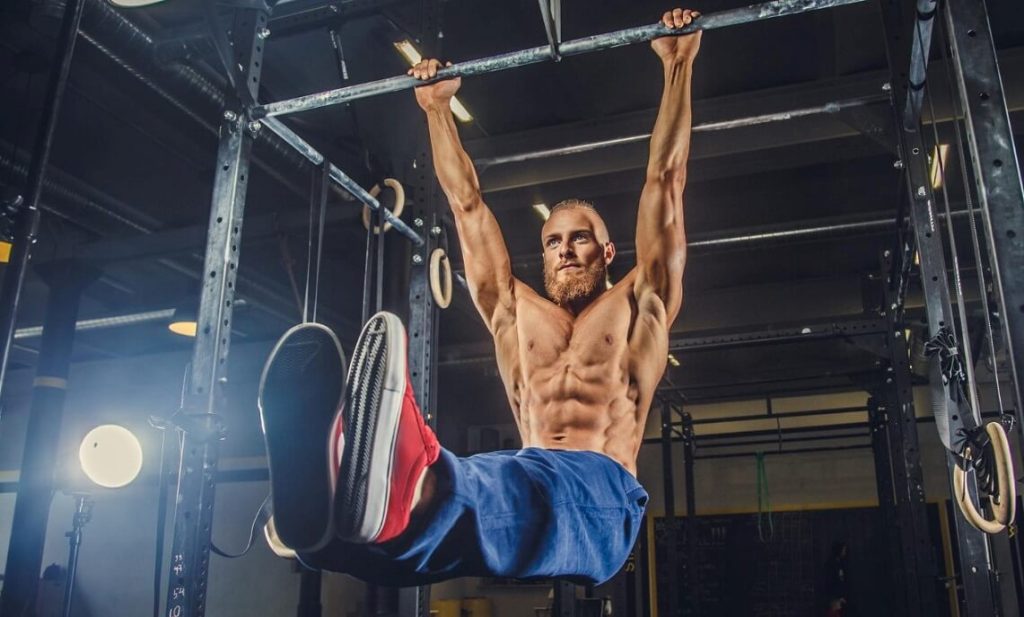
You should have access to a pull up bar high enough to hang freely without your toes touching the ground. If you only have access to a lower bar, it will limit the range of motion.
But don’t let this prevent you from doing it. Because of the limited height of my ceilings at my home, I can’t hang freely from my pull up bar. However, I do leg raises anyway.
Positioning
To position yourself, grab a bar a bit wider than shoulder width. Let your legs hang freely below you. Point your toes down.
Pointing your toes down will help you engage your abs. If you think about hanging from a bar as a version of hanging hollow hold, this will help prevent swinging.
Upward movement
To raise your legs up, start lifting your legs by bending your hips. Keep your toes pointed and your legs straight.
Keep on lifting your legs up until they are parallel to the ground. So far, only your hip flexors were doing all of the work.
When your legs are parallel to the ground try to move your butt forward and up. This will help you engage your core. Think about this part of the movement as preparation for toes to bar exercise.
If you can’t pull out this part of the move, try to add it into your knee raises. When you are able to do it with knee raises, you will soon be able to do it with leg raises too.
Downward movement
To start going down, let your butt lower down slowly. After your butt is lowered and your legs are parallel to the floor (hanging L-sit), start lowering your legs. Keep on lowering your legs until you are hanging freely from the bar.
This lowering part of the movement should be performed slowly and with control. This is the eccentric portion of the move which is the most important for muscle growth. So, keep special attention to lower down longer than lifting up.
Keep your toes pointed down during the entire duration of the movement. Try to reduce swinging as much as possible.
Repeat raising up and lowering down moves for reps.
Common mistakes
Mistake 1 – Using momentum to lift your legs
Mistake:
The most common mistake is using momentum to lift your legs up. When you still struggle with this move, you may turn to cheating to be able to do it. This is the sign you are still missing the needed strength to pull it off with the control.
Correction:
To be able to perform hanging leg raises with control, you should slowly build your strength. It’s better to swallow your pride and return to easier skills like hanging knee raises. Build your strength by slowly increasing the number of knee raises reps. Try again after at least one month.
Mistake 2 – Swinging without control
Mistake:
If you are not paying attention to keeping your body rigid, you will swing forward and backward without control. This will make you lose your energy and reduce the number of reps you are able to do. You will also lose the added chance this skill brings to improve the strength of your core, shoulders, and arms.
Correction:
To correct this mistake, try to reduce swinging motion as much as possible. This is done using your arms, core, and shoulder muscles. Keep those muscles engaged during the move and actively concentrate on reducing the swing.
Imagine keeping a hollow hold position when hanging. Try to keep the same tense feeling during movement.
Mistake 3 – Dropping your legs down
Mistake:
One common problem you may find is dropping your legs down rapidly without control. This will prevent you from reaping the most rewards from this exercise.
The eccentric part of this exercise is the most important part of the movement. At least if you are after building strength and muscle mass. This is the same as with all other exercises. Lowering your legs down is the eccentric part of this move.
The cause of this mistake might be that you still miss the strength needed. But it also may be that nobody told you this is not how you should do it.
Correction:
Pay special attention to lowering your legs as slowly as possible. If you are raising your legs up by counting one, try to lower your legs by counting one, two, three. If you are counting to two when raising, count to four or five when lowering down.
Hanging leg raises progression
If you struggle with this exercise, no big deal. There are easier variants you can try before you are able to do this hard move. The obvious one is hanging knee raises. There are also other variants that do not require you to hang from the bar if you still struggle with grip strength or shoulder extension.
Here are some easier skills you can try to do:
Once you want to move beyond hanging leg raises, you can try dragon flag variants. Here are some harder skills you can try to do:
This exercise is part of a front lever progression. The skills mentioned above are just a sample. You will reap the most benefits by going one step at a time following progression.
Key takeaways
Hanging leg raises are great for building your hip flexor strength. It will also help you build your abs, obliques, and quads if done right.
It will improve your hip and hamstring flexibility.
When you are able to perform this exercise, attained strength will help you with other upper and lower body exercises.

